Marco Matassoni
MOSEL: 950,000 Hours of Speech Data for Open-Source Speech Foundation Model Training on EU Languages
Oct 01, 2024



Abstract:The rise of foundation models (FMs), coupled with regulatory efforts addressing their risks and impacts, has sparked significant interest in open-source models. However, existing speech FMs (SFMs) fall short of full compliance with the open-source principles, even if claimed otherwise, as no existing SFM has model weights, code, and training data publicly available under open-source terms. In this work, we take the first step toward filling this gap by focusing on the 24 official languages of the European Union (EU). We collect suitable training data by surveying automatic speech recognition datasets and unlabeled speech corpora under open-source compliant licenses, for a total of 950k hours. Additionally, we release automatic transcripts for 441k hours of unlabeled data under the permissive CC-BY license, thereby facilitating the creation of open-source SFMs for the EU languages.
L2 proficiency assessment using self-supervised speech representations
Nov 16, 2022Abstract:There has been a growing demand for automated spoken language assessment systems in recent years. A standard pipeline for this process is to start with a speech recognition system and derive features, either hand-crafted or based on deep-learning, that exploit the transcription and audio. Though these approaches can yield high performance systems, they require speech recognition systems that can be used for L2 speakers, and preferably tuned to the specific form of test being deployed. Recently a self-supervised speech representation based scheme, requiring no speech recognition, was proposed. This work extends the initial analysis conducted on this approach to a large scale proficiency test, Linguaskill, that comprises multiple parts, each designed to assess different attributes of a candidate's speaking proficiency. The performance of the self-supervised, wav2vec 2.0, system is compared to a high performance hand-crafted assessment system and a BERT-based text system both of which use speech transcriptions. Though the wav2vec 2.0 based system is found to be sensitive to the nature of the response, it can be configured to yield comparable performance to systems requiring a speech transcription, and yields gains when appropriately combined with standard approaches.
Proficiency assessment of L2 spoken English using wav2vec 2.0
Oct 24, 2022



Abstract:The increasing demand for learning English as a second language has led to a growing interest in methods for automatically assessing spoken language proficiency. Most approaches use hand-crafted features, but their efficacy relies on their particular underlying assumptions and they risk discarding potentially salient information about proficiency. Other approaches rely on transcriptions produced by ASR systems which may not provide a faithful rendition of a learner's utterance in specific scenarios (e.g., non-native children's spontaneous speech). Furthermore, transcriptions do not yield any information about relevant aspects such as intonation, rhythm or prosody. In this paper, we investigate the use of wav2vec 2.0 for assessing overall and individual aspects of proficiency on two small datasets, one of which is publicly available. We find that this approach significantly outperforms the BERT-based baseline system trained on ASR and manual transcriptions used for comparison.
Seed Words Based Data Selection for Language Model Adaptation
Jul 20, 2021
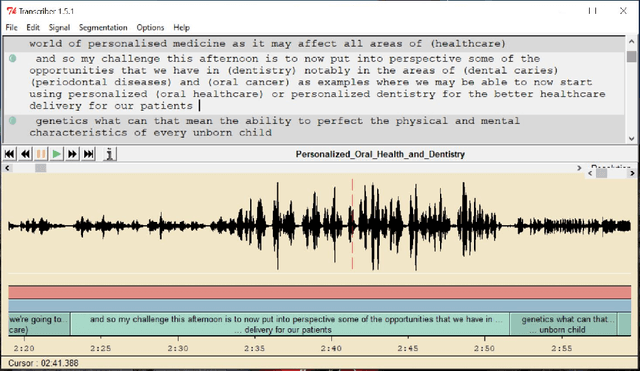

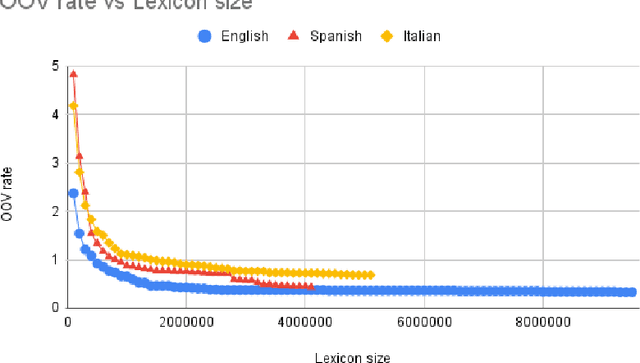
Abstract:We address the problem of language model customization in applications where the ASR component needs to manage domain-specific terminology; although current state-of-the-art speech recognition technology provides excellent results for generic domains, the adaptation to specialized dictionaries or glossaries is still an open issue. In this work we present an approach for automatically selecting sentences, from a text corpus, that match, both semantically and morphologically, a glossary of terms (words or composite words) furnished by the user. The final goal is to rapidly adapt the language model of an hybrid ASR system with a limited amount of in-domain text data in order to successfully cope with the linguistic domain at hand; the vocabulary of the baseline model is expanded and tailored, reducing the resulting OOV rate. Data selection strategies based on shallow morphological seeds and semantic similarity viaword2vec are introduced and discussed; the experimental setting consists in a simultaneous interpreting scenario, where ASRs in three languages are designed to recognize the domain-specific terms (i.e. dentistry). Results using different metrics (OOV rate, WER, precision and recall) show the effectiveness of the proposed techniques.
Mixtures of Deep Neural Experts for Automated Speech Scoring
Jun 23, 2021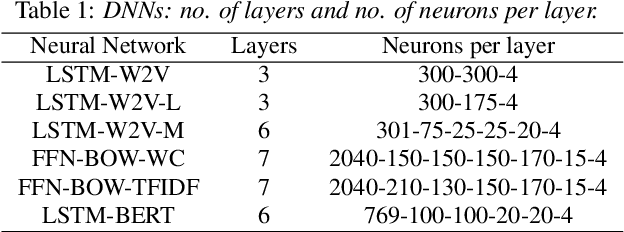
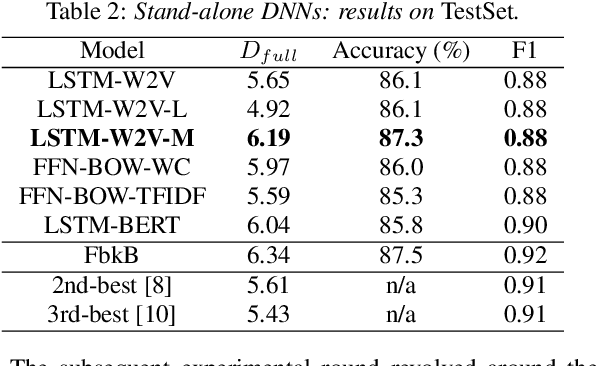
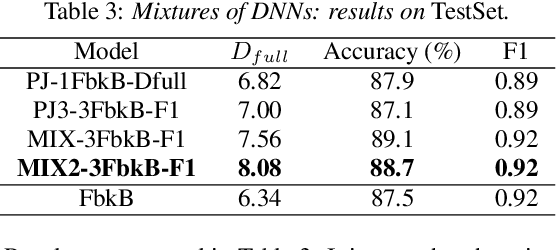
Abstract:The paper copes with the task of automatic assessment of second language proficiency from the language learners' spoken responses to test prompts. The task has significant relevance to the field of computer assisted language learning. The approach presented in the paper relies on two separate modules: (1) an automatic speech recognition system that yields text transcripts of the spoken interactions involved, and (2) a multiple classifier system based on deep learners that ranks the transcripts into proficiency classes. Different deep neural network architectures (both feed-forward and recurrent) are specialized over diverse representations of the texts in terms of: a reference grammar, the outcome of probabilistic language models, several word embeddings, and two bag-of-word models. Combination of the individual classifiers is realized either via a probabilistic pseudo-joint model, or via a neural mixture of experts. Using the data of the third Spoken CALL Shared Task challenge, the highest values to date were obtained in terms of three popular evaluation metrics.
Learning to Rank Microphones for Distant Speech Recognition
Apr 13, 2021



Abstract:Fully exploiting ad-hoc microphone networks for distant speech recognition is still an open issue. Empirical evidence shows that being able to select the best microphone leads to significant improvements in recognition without any additional effort on front-end processing. Current channel selection techniques either rely on signal, decoder or posterior-based features. Signal-based features are inexpensive to compute but do not always correlate with recognition performance. Instead decoder and posterior-based features exhibit better correlation but require substantial computational resources. In this work, we tackle the channel selection problem by proposing MicRank, a learning to rank framework where a neural network is trained to rank the available channels using directly the recognition performance on the training set. The proposed approach is agnostic with respect to the array geometry and type of recognition back-end. We investigate different learning to rank strategies using a synthetic dataset developed on purpose and the CHiME-6 data. Results show that the proposed approach is able to considerably improve over previous selection techniques, reaching comparable and in some instances better performance than oracle signal-based measures.
Experiments of ASR-based mispronunciation detection for children and adult English learners
Apr 13, 2021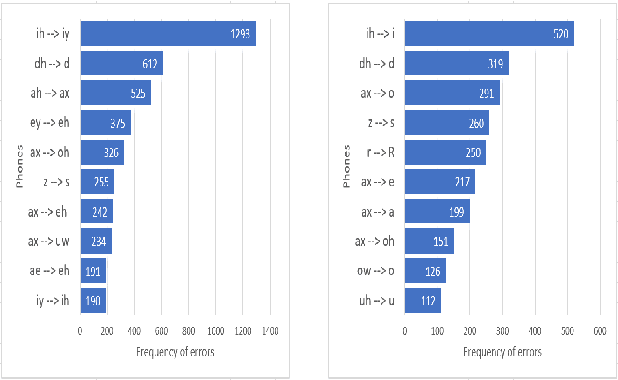
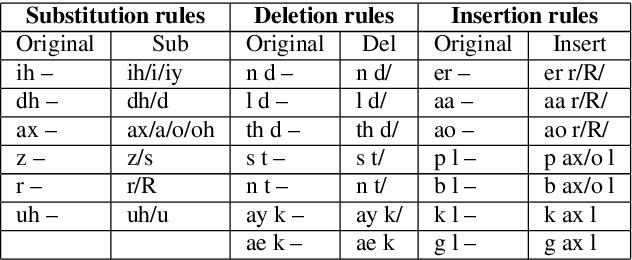
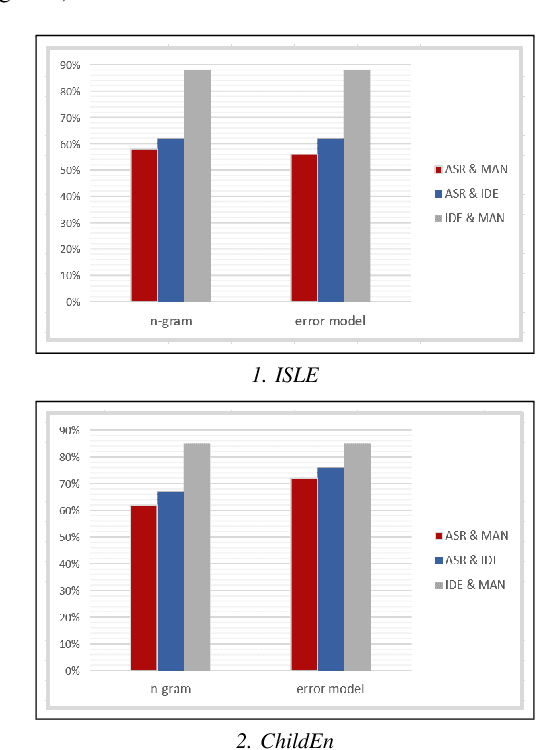
Abstract:Pronunciation is one of the fundamentals of language learning, and it is considered a primary factor of spoken language when it comes to an understanding and being understood by others. The persistent presence of high error rates in speech recognition domains resulting from mispronunciations motivates us to find alternative techniques for handling mispronunciations. In this study, we develop a mispronunciation assessment system that checks the pronunciation of non-native English speakers, identifies the commonly mispronounced phonemes of Italian learners of English, and presents an evaluation of the non-native pronunciation observed in phonetically annotated speech corpora. In this work, to detect mispronunciations, we used a phone-based ASR implemented using Kaldi. We used two non-native English labeled corpora; (i) a corpus of Italian adults contains 5,867 utterances from 46 speakers, and (ii) a corpus of Italian children consists of 5,268 utterances from 78 children. Our results show that the selected error model can discriminate correct sounds from incorrect sounds in both native and nonnative speech, and therefore can be used to detect pronunciation errors in non-native speech. The phone error rates show improvement in using the error language model. The ASR system shows better accuracy after applying the error model on our selected corpora.
TLT-school: a Corpus of Non Native Children Speech
Jan 22, 2020

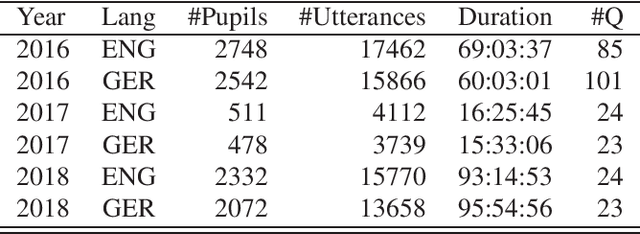
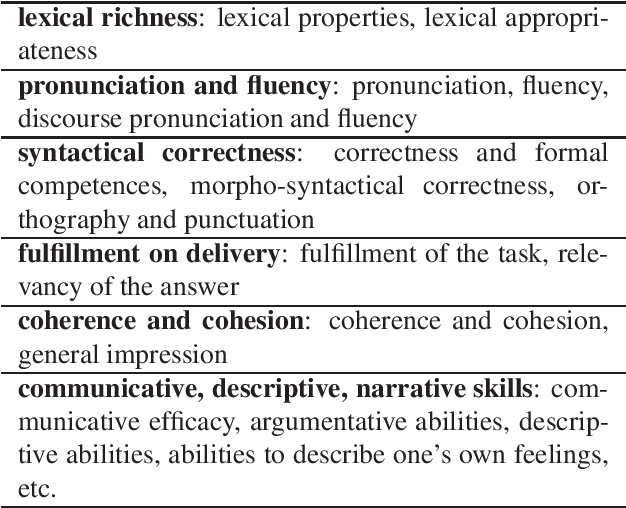
Abstract:This paper describes "TLT-school" a corpus of speech utterances collected in schools of northern Italy for assessing the performance of students learning both English and German. The corpus was recorded in the years 2017 and 2018 from students aged between nine and sixteen years, attending primary, middle and high school. All utterances have been scored, in terms of some predefined proficiency indicators, by human experts. In addition, most of utterances recorded in 2017 have been manually transcribed carefully. Guidelines and procedures used for manual transcriptions of utterances will be described in detail, as well as results achieved by means of an automatic speech recognition system developed by us. Part of the corpus is going to be freely distributed to scientific community particularly interested both in non-native speech recognition and automatic assessment of second language proficiency.
Non-native children speech recognition through transfer learning
Sep 25, 2018
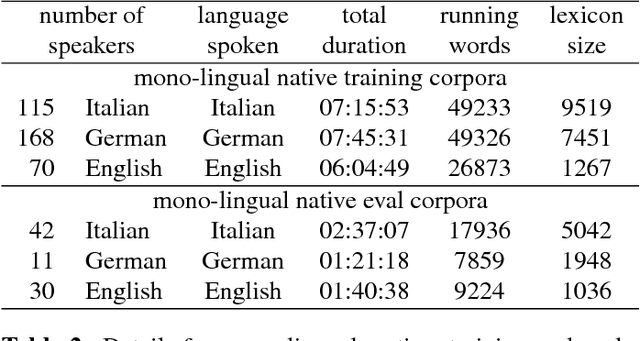
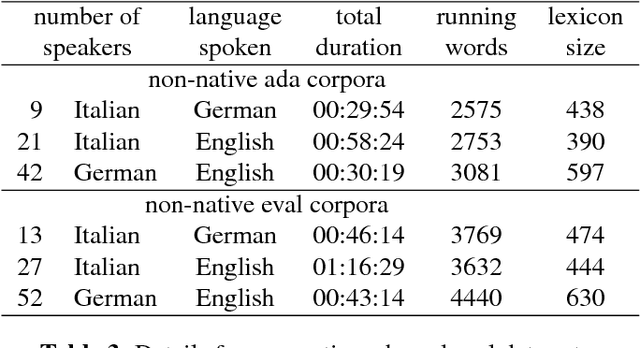
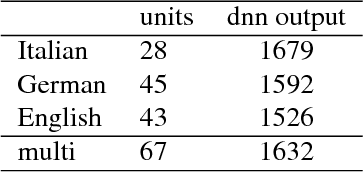
Abstract:This work deals with non-native children's speech and investigates both multi-task and transfer learning approaches to adapt a multi-language Deep Neural Network (DNN) to speakers, specifically children, learning a foreign language. The application scenario is characterized by young students learning English and German and reading sentences in these second-languages, as well as in their mother language. The paper analyzes and discusses techniques for training effective DNN-based acoustic models starting from children native speech and performing adaptation with limited non-native audio material. A multi-lingual model is adopted as baseline, where a common phonetic lexicon, defined in terms of the units of the International Phonetic Alphabet (IPA), is shared across the three languages at hand (Italian, German and English); DNN adaptation methods based on transfer learning are evaluated on significant non-native evaluation sets. Results show that the resulting non-native models allow a significant improvement with respect to a mono-lingual system adapted to speakers of the target language.
Automatic Quality Estimation for ASR System Combination
Jun 22, 2017



Abstract:Recognizer Output Voting Error Reduction (ROVER) has been widely used for system combination in automatic speech recognition (ASR). In order to select the most appropriate words to insert at each position in the output transcriptions, some ROVER extensions rely on critical information such as confidence scores and other ASR decoder features. This information, which is not always available, highly depends on the decoding process and sometimes tends to over estimate the real quality of the recognized words. In this paper we propose a novel variant of ROVER that takes advantage of ASR quality estimation (QE) for ranking the transcriptions at "segment level" instead of: i) relying on confidence scores, or ii) feeding ROVER with randomly ordered hypotheses. We first introduce an effective set of features to compensate for the absence of ASR decoder information. Then, we apply QE techniques to perform accurate hypothesis ranking at segment-level before starting the fusion process. The evaluation is carried out on two different tasks, in which we respectively combine hypotheses coming from independent ASR systems and multi-microphone recordings. In both tasks, it is assumed that the ASR decoder information is not available. The proposed approach significantly outperforms standard ROVER and it is competitive with two strong oracles that e xploit prior knowledge about the real quality of the hypotheses to be combined. Compared to standard ROVER, the abs olute WER improvements in the two evaluation scenarios range from 0.5% to 7.3%.
 Add to Chrome
Add to Chrome Add to Firefox
Add to Firefox Add to Edge
Add to Edge